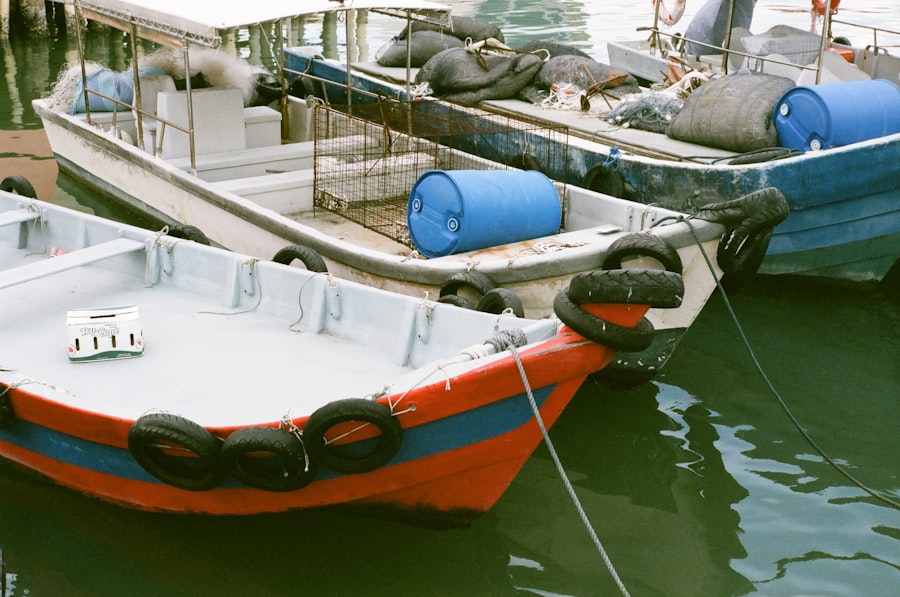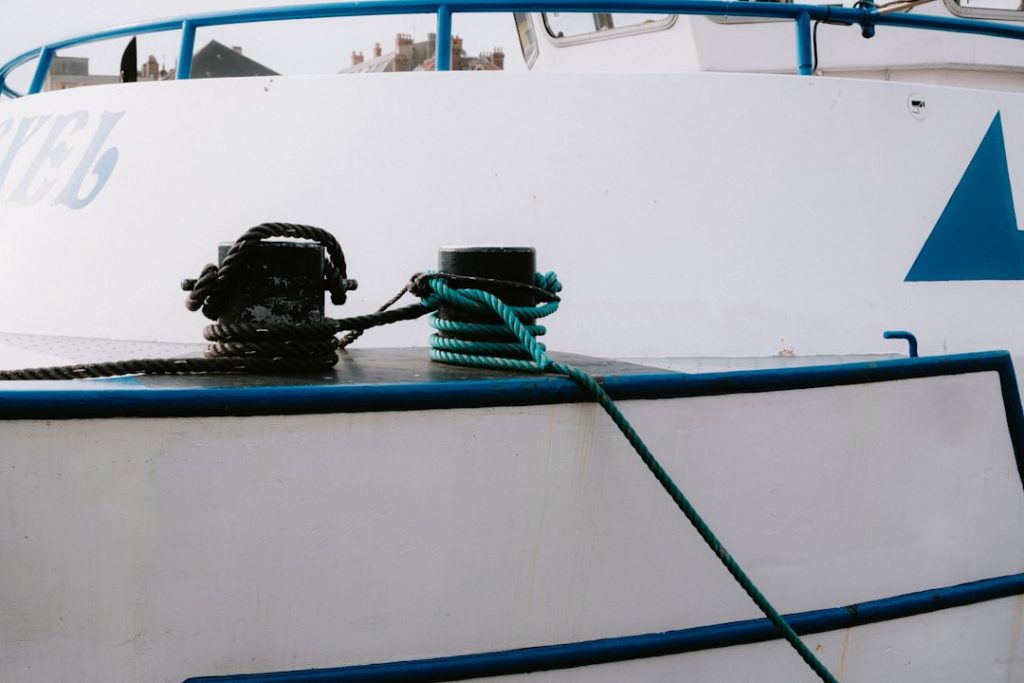Selecting a quality used outboard motor can be a game-changer for boat enthusiasts, offering a blend of performance and affordability that new models often cannot match. One of the most significant advantages is cost savings. New outboard motors can carry hefty price tags, often running into thousands of dollars.
In contrast, a well-maintained used motor can provide similar performance at a fraction of the cost. This financial flexibility allows boaters to allocate their budgets toward other essential aspects of boating, such as safety equipment, maintenance supplies, or even upgrades to the boat itself. Moreover, quality used outboard motors often come with a proven track record.
Many reputable sellers provide detailed histories of their motors, including maintenance records and previous usage. This transparency can give buyers confidence in their purchase, knowing that they are investing in a motor that has been cared for and is likely to perform reliably. Additionally, the depreciation on used motors is significantly less than that of new ones, meaning that if you decide to sell your used motor later on, you may recoup a substantial portion of your initial investment.
Key Takeaways
- Quality used outboard motors offer cost savings and reliable performance.
- Selecting the correct size and power is crucial for optimal boat operation.
- Inspecting and testing used motors ensures you avoid costly repairs.
- Knowing where to find reputable sellers helps secure trustworthy motors.
- Proper installation and regular maintenance extend the motor’s lifespan.
How to Determine the Right Size and Power for Your Boat
Choosing the right size and power for an outboard motor is crucial for optimizing your boating experience. The first step in this process is understanding the specifications of your boat. Each boat has a recommended horsepower range, which is typically indicated by the manufacturer.
This range is based on the boat’s weight, design, and intended use. For instance, a lightweight fishing boat may only require a modest 15-30 horsepower motor, while larger vessels designed for water sports or long-distance cruising may need motors exceeding 100 horsepower. In addition to horsepower, the physical size of the motor must also be considered.
Outboard motors come in various shaft lengths—short (15 inches), long (20 inches), and extra-long (25 inches)—and selecting the correct length is essential for proper installation and performance. A motor with an inappropriate shaft length can lead to poor handling and reduced efficiency. For example, if the shaft is too short, the propeller may not be submerged adequately, leading to cavitation and loss of power.
Conversely, an excessively long shaft can create drag and instability. Therefore, it’s vital to consult your boat’s specifications and possibly seek advice from experienced boaters or professionals when determining the right size and power.
Where to Find Reliable Used Outboard Motors for Sale

Finding reliable used outboard motors requires diligence and research. One of the best places to start is online marketplaces dedicated to boating equipment, such as Boat Trader or Craigslist. These platforms often feature a wide range of listings from private sellers and dealers alike.
When browsing these sites, it’s essential to filter your search based on your specific needs—such as horsepower, brand, and price range—to streamline the process. Local marine dealerships can also be excellent sources for used outboard motors. Many dealerships offer trade-in programs where customers can exchange their old motors for newer models.
These dealers typically inspect and refurbish their inventory before resale, providing an added layer of assurance regarding the motor’s condition. Additionally, attending boat shows or local marine expos can present opportunities to connect with sellers directly and inspect motors in person. Networking with fellow boaters through forums or local clubs can also yield valuable recommendations for trustworthy sellers.
The Importance of Inspecting and Testing a Used Outboard Motor
| Inspection/Test | Purpose | Key Metrics | Importance Level |
|---|---|---|---|
| Visual Inspection | Check for physical damage, corrosion, and wear | Corrosion spots, cracks, missing parts | High |
| Compression Test | Assess engine cylinder health | Compression pressure (psi or bar), consistency across cylinders | High |
| Fuel System Check | Ensure fuel delivery and cleanliness | Fuel flow rate, presence of debris or water in fuel | Medium |
| Electrical System Test | Verify ignition and charging system functionality | Voltage output, spark plug condition, battery charge | High |
| Cooling System Inspection | Prevent overheating and engine damage | Water flow rate, thermostat operation, impeller condition | High |
| Gearbox and Propeller Check | Ensure smooth operation and no damage | Gear engagement, propeller damage, oil condition | Medium |
| Test Run | Evaluate overall engine performance under load | RPM range, engine temperature, unusual noises or vibrations | High |
Before finalizing a purchase, inspecting and testing a used outboard motor is paramount to ensure its reliability and performance. A thorough visual inspection should include checking for signs of corrosion, rust, or damage to the exterior casing. Pay close attention to the propeller for any dents or nicks that could affect performance.
Additionally, examining the fuel lines and connections for leaks or wear can prevent future issues. Testing the motor is equally important. If possible, request a demonstration on the water to observe how the motor performs under load.
Listen for any unusual noises that could indicate mechanical problems, such as knocking or grinding sounds. Assess how smoothly the motor accelerates and idles; any hesitation could signal underlying issues. Furthermore, checking the engine’s cooling system is crucial; overheating can lead to severe damage over time.
If you’re not confident in your ability to assess these factors, consider hiring a marine mechanic to conduct a pre-purchase inspection.
Tips for Negotiating a Fair Price for a Used Outboard Motor
Negotiating a fair price for a used outboard motor requires preparation and strategy. Start by researching comparable models in similar condition to establish a baseline price range. Websites like NADA Guides or Kelley Blue Book can provide insights into market values based on make, model, year, and condition.
Having this information at hand will empower you during negotiations and help you avoid overpaying. When engaging with the seller, approach the conversation with respect and openness. Begin by expressing genuine interest in the motor while also highlighting any concerns you may have discovered during your inspection or testing phase.
This approach not only demonstrates your knowledge but also sets the stage for a constructive dialogue about price adjustments based on any issues identified. Be prepared to make an initial offer lower than your maximum budget; this gives you room to negotiate upward while still staying within your financial limits.
Maintenance and Care Tips for Used Outboard Motors

Proper maintenance is essential for prolonging the life of a used outboard motor and ensuring optimal performance. Regularly changing the oil and replacing filters are fundamental practices that should not be overlooked. Most manufacturers recommend changing the oil every 100 hours of operation or at least once per season, whichever comes first.
Using high-quality oil specifically designed for marine engines can significantly enhance performance and longevity. In addition to oil changes, inspecting and replacing spark plugs periodically is crucial for maintaining engine efficiency. Worn or fouled spark plugs can lead to hard starting or poor acceleration.
Furthermore, flushing the cooling system with fresh water after each use—especially in saltwater environments—can prevent corrosion and buildup that may impede performance over time. Keeping the motor clean by washing it down after use helps protect against salt deposits and grime accumulation.
The Best Brands and Models of Used Outboard Motors to Consider
When considering used outboard motors, certain brands have established themselves as leaders in reliability and performance over the years. Yamaha is often lauded for its innovative technology and robust build quality; their four-stroke models are particularly popular among recreational boaters for their fuel efficiency and quiet operation. Honda is another brand known for its reliability; their outboards are designed with advanced engineering that emphasizes durability and low emissions.
Mercury outboards are also worth considering due to their extensive range of models catering to various boating needs—from small fishing boats to larger vessels requiring high horsepower. Evinrude has made a name for itself with its E-TEC series, which offers impressive fuel efficiency and low maintenance requirements thanks to its direct fuel injection technology. When exploring used options from these brands, it’s essential to focus on specific models that have received positive reviews from users regarding performance and reliability.
How to Properly Install and Maintain a Used Outboard Motor
Installing a used outboard motor requires careful attention to detail to ensure safety and optimal performance. Begin by consulting your boat’s manual for specific installation instructions tailored to your vessel type. Ensure that you have all necessary tools on hand before starting the installation process; this typically includes wrenches, screwdrivers, and possibly a hoist if dealing with heavier motors.
Once you’ve positioned the motor on the transom, secure it using appropriate bolts while ensuring it is level with the boat’s bottom line for optimal performance. After installation, check all connections—fuel lines, electrical wiring, and control cables—to ensure they are secure and free from wear or damage. Following installation, conduct a thorough test run in controlled conditions before venturing out into open waters.
Ongoing maintenance post-installation is critical for ensuring longevity and reliability. Regularly inspect all components for signs of wear or corrosion, particularly after extended periods of use or exposure to harsh conditions. Keeping detailed records of maintenance activities can help track when specific services are due, ensuring that your outboard motor remains in peak condition throughout its lifespan.


